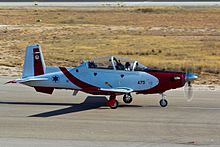
Ilan Ramon was an Israeli fighter pilot and later the first Israeli astronaut. He served as a Space Shuttle payload specialist on STS-107, the fatal mission of Columbia, in which he and the six other crew members were killed when the spacecraft disintegrated during re-entry. At 48, Ramon was the oldest member of the crew. He is the only foreign recipient of the United States Congressional Space Medal of Honor, which was awarded posthumously.
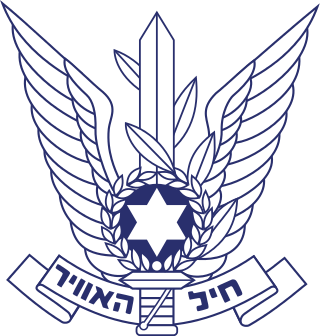
The Israeli Air Force operates as the aerial warfare branch of the Israel Defense Forces (IDF). It was founded on May 28, 1948, shortly after the Israeli Declaration of Independence. As of April 2022, Aluf Tomer Bar has been serving as the Air Force commander.

The Israel Aircraft Industries Kfir is an Israeli all-weather multirole combat aircraft based on the French Dassault Mirage 5, with Israeli avionics and an Israeli-built version of the General Electric J79 turbojet engine.

A Weapon Systems Officer (WSO), nicknamed "Wizzo", is an air flight officer directly involved in all air operations and weapon systems of a military aircraft.

The Garud Commando Force is the special forces unit of the Indian Air Force. It was formed in September 2004 and has a current strength of over 1500 personnel. The unit derives its name from Garuda, a Hindu God.
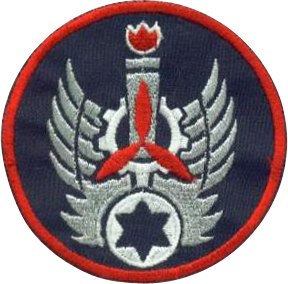
Tel Nof Airbase, also known as Air Force Base 8, is the main base of the Israeli Air Force (IAF) and houses its headquarter. It is located 5 km south of Rehovot, Israel.
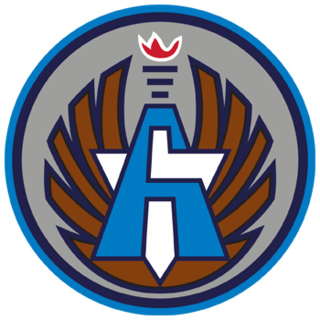
Hatzerim Airbase is an Israeli Air Force (IAF) base in the Negev desert on the west outskirts of Beersheba, near kibbutz Hatzerim. Apart from operational fighter jets, it houses the IAF Flight Academy, the IAF Aerobatic Team and the IAF Museum.

U.S. Air Force aeronautical ratings are military aviation skill standards established and awarded by the United States Air Force for commissioned officers participating in "regular and frequent flight", either aerially or in space, in performance of their duties. USAF aeronautical badges, commonly referred to as "wings" from their shape and their historical legacy, are awarded by the Air Force in recognition of degrees of achievement and experience. Officers earning these badges and maintaining their requirements are classified as rated officers and receive additional pay and allowances.

The IAF Aerobatic Team is the aerobatic display team of the Israeli Air Force. Until summer 2010 the team flew the IAI Tzukit, a variant of the French Fouga Magister manufactured under license by Israel Aerospace Industries. Since then the team operates four Beechcraft T-6 Texan II aircraft.
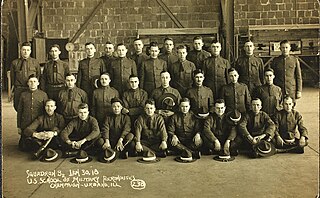
The Flying/Aviation Cadet Pilot Training Program was originally created by the U.S. Army to train its pilots. Originally created in 1907 by the U.S. Army Signal Corps, it expanded as the Army's air assets increased.

Flying Division, Air Training Command, was a training formation of the United States Air Force. The unit was established in 1926 as the Air Corps Training Center to be the primary pilot training center for the Air Corps. It was reorganized into one of three training commands created by the Office of the Chief of the Air Corps in 1940 to accommodate the large number of air cadets being recruited as a result of the expansion of the corps after the fall of France. During World War II, thousands of cadets attended various flight schools throughout the Central United States being trained as pilots for fighters, bombers and transports. It also trained the navigators, bombardiers and gunners necessary for the bombers to attack enemy targets in the combat areas overseas. After World War II, it became the primary pilot and aircrew training unit of the United States Air Force Air Training Command.
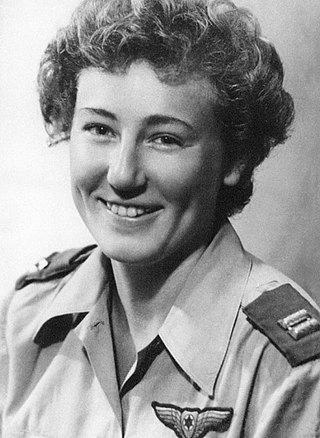
Yael Rom, born Yael Finkelstein, was one of the first female pilots of the Israeli Air Force and the first trained and certified by the force. She was co-pilot of the lead C-47 at the parachute drop at the Mitla Pass which launched the 1956 Suez War.

The Brazilian Air Force Academy is the Brazilian Air Force's educational institution that provides initial officer training for the main Officer Board of Brazil's Air Force Command. The academy is located east of Pirassununga city, in São Paulo State county, and it is the largest Brazilian Air Base as well as the largest Air Force Academy of Latin America. All three Officer Formation Courses (CFOs) of Academia da Força Aérea are recognized as Superior Degree by Brazil's Ministry of Educations.

The Israeli Naval Academy is a voluntary course, dedicated to the training, education and selection of Naval Officers, and it takes place alongside other instructional courses at the Naval Command School in the Israeli Naval Training Base. The Naval Academy is considered one of the most prestigious and demanding courses in the IDF – alongside the Israeli Air Force Flight Academy. On average, only one out of four cadets completes the course successfully, representing a 10% completion rate from initial selection process to graduation. The course is nearly three years long, and cadets graduate with a B.A. from Haifa University and an Officer rank of Lieutenant. Graduates are committed to 61 months' additional military service.

Lockheed Martin F-35 Lightning II Israeli procurement is the result of an agreement for the government of Israel to procure the Lockheed Martin F-35 Lightning II for the Israeli Air Force as the F-35I "Adir". The first nine F-35s became operational with the Israeli Air Force in December 2017.

An officer is a person who holds a position of authority as a member of an armed force or uniformed service.

On 26 July 2010, an Israeli Air Force Sikorsky CH-53 Yas'ur helicopter crashed during a training flight in the Carpathian Mountains, near the city of Brașov in Romania. The accident took place during a joint Romanian-Israeli aviation military exercise code-named "Blue Sky 2010".
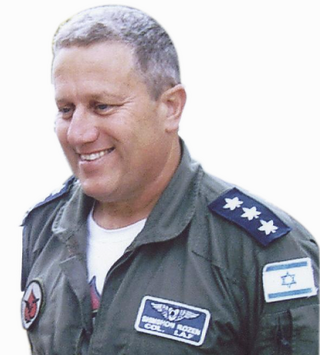
Shimshon Rozen was an Israeli Air Force weapon systems officer and a colonel in the Israeli Defense Forces (IDF). Rozen participated in the Yom Kippur War and 1982 Lebanon War, accumulating hundreds of operational flying hours. Rozen also participated in the IAF's historic flight over the Auschwitz concentration camp.

Ran Goren is a retired fighter pilot and Major General of the IDF, former Deputy Commander of the Air Force and Head of the Manpower Directorate.

Aluf Amikam Norkin is an Israeli general, who served as commander of the Israeli Air Force (IAF) from 2017 to 2022. Before his selection to succeed Amir Eshel as commander of the IAF, Norkin served as head of the IDF Planning Directorate.



